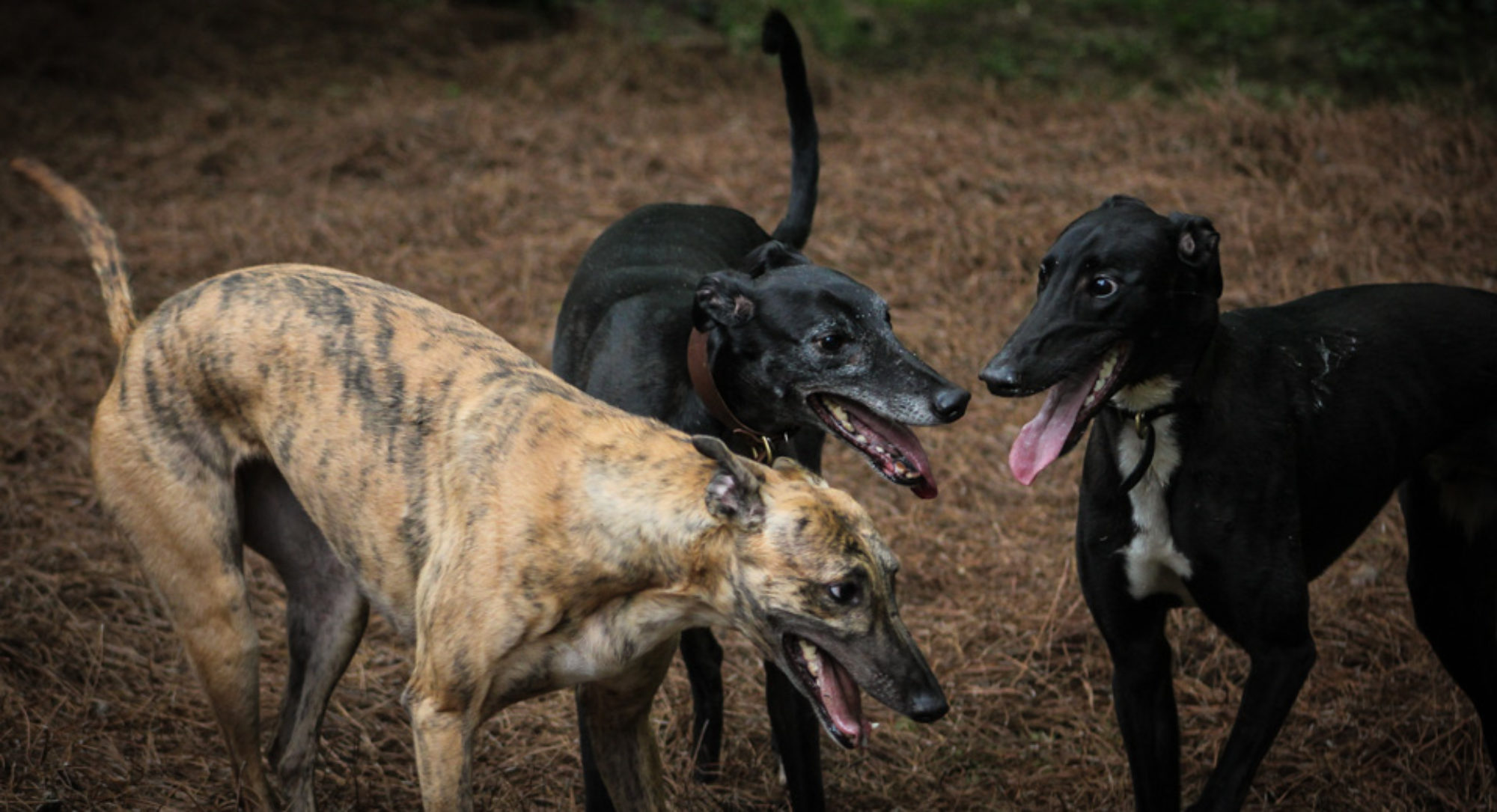Greyhounds are runners, right?
Of course, Greyhounds are runners! Running is the reason we have the modern Greyhound. But Greyhounds are not bred for the type of running most human runners do. Here are a few ideas on how to transition your sprinter into your best running buddy.

Is there a difference in sprinting and distance running?
Yes! Just like it takes time to work up to a 5K, 10K, or 10 miler it is going to be a process for your hound as well. The first step to is make sure your Greyhound is sound and does not have an old injury or arthritis that could cause him pain with increased activity.
I recommend starting with the walk run method based the distance of his current/previous walks. Be sure to keep a close eye on his toenails—they should be short!
Be sure to bring water and poop bags. No one likes a dog owner who is not responsible and does not clean up after his or her pet.
Consider a hands free leash. I don’t like carrying a leash when running. There are plenty of good options to try. I prefer options with a handle so you can grab the dog quickly if needed.
How much exercise is too much
I have a very energetic go-go Greyhound and when he becomes disinterested I know we need to slow down and head home. Look for simple clues from your hound. They will let you know when they are done.

Keep in mind, your Greyhound may not be able to run that 10K with you and that is fine. I run a loop around the house and will pick-up/drop-off the dog depending on what I am planning to do and how he is looking/acting.
My dog sniffs constantly—what do I do?
Darla is a sniffer and it drives me NUTS. She is not a good dog to run with.
I try to let Darla be the dog she is. Someone once told me taking your dog out and not letting them sniff is like taking a kindergartener to the zoo and not letting them ask questions—close to torture in the doggie/kindergartener world. When I hike or walk with D I give her plenty of smell breaks but I try to control when these break occur so we can actually get some exercise!









